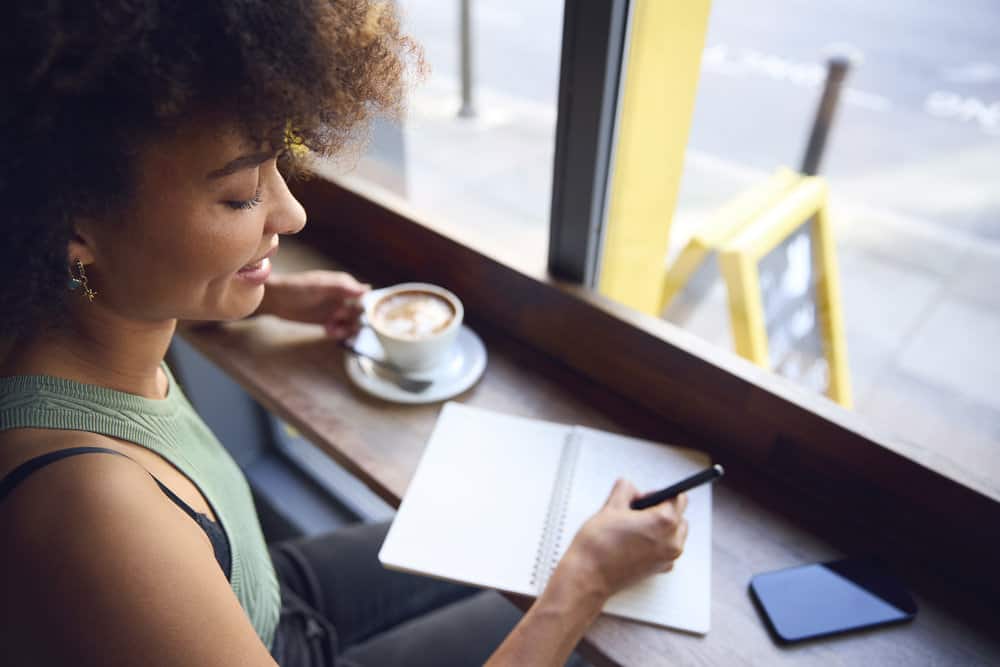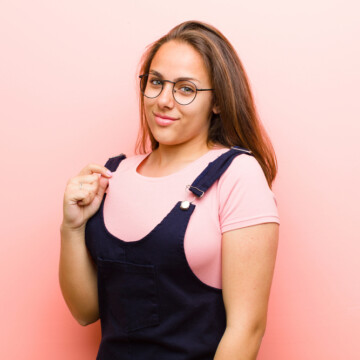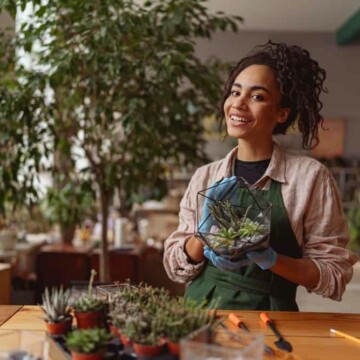
Did you know that scalp massage benefits include hair growth, regrowth, thinning, stress relief, and much more?
In this article, we'll cover how to do a scalp massage for hair growth, including the exact massage techniques you should use while massaging your scalp at home or with a massage therapist.
Table of Contents
- 1 How to Do a Scalp Massage for Hair Growth
- 2 Why Should I Massage My Scalp?
- 3 How to Get a Healthy Scalp
- 4 Do Scalp Massages Stimulate Hair Growth?
- 5 Why Is It Good to Massage Your Scalp?
- 5.1 What Happens if You Massage Your Scalp Every Day?
- 5.2 How Often Should I Massage My Scalp for Hair Growth?
- 5.3 Is It Good to Massage Your Scalp Every Day?
- 5.4 What Are the Disadvantages of Head Massage?
- 5.5 Is Scalp Massage Healthy?
- 5.6 How Much Does a Scalp Massage Cost at a Spa or Salon?
- 5.7 Do Scalp Massage Brushes Work?
- 5.8 Related Articles
How to Do a Scalp Massage for Hair Growth
This video demonstration by Dr. Taz MD, a Board Certified Medical Doctor, provides a detailed step-by-step traditional scalp massage for improving hair growth.
Dr. Taz, MD, demonstrates an essential oil scalp massage that, when done consistently for a few months, can help reverse hair loss and regrow hair with similar results as Rogaine but without the side effects.
The massage uses a blend of rosemary and peppermint essential oils in a carrier oil. It's important to note that hair regrowth won't be immediate, as hair follicles are on a 60-day cycle, so results can take three to four months to appear.
Step-by-Step Instructions for Standardized Scalp Massages
- Start in the center of the crown (where you usually part your hair) and apply 3-5 drops of the oil blend.
- Massage the oil with your fingertips, spending about a minute or two in this area.
- Gradually spread out the oils clockwise, massaging around the scalp for 3-5 minutes.
- Move to the side of the scalp (right or left, as both sides will be done), applying 3-5 drops of oil and massaging in the center before moving outwards in a clockwise fashion for about three minutes.
- Rotate to the back of the scalp, applying a few drops of oil and massaging from the center outwards, moving down into the neck to encourage blood flow.
- Finally, move to the other side of the scalp and repeat the process of applying oil and massaging from the center outwards.
- Spend more time on the massage if desired, but the four key steps should take about 3 minutes each for a total of 12 minutes.
Consistent practice of these traditional scalp massage techniques can lead to reduced hair loss, hair regrowth, and improved hair health.

Why Should I Massage My Scalp?
First, let's talk about why massage therapy is so important. Our body contains many organs with differing functions. Still, our skin, which includes the scalp on your head (i.e., our protective covering), is the largest organ within the body’s integumentary system.
The scalp is one of many places on the body where hair grows. The uppermost layer of the scalp is called the stratum corneum, and it renews every couple of weeks. This renewal process occurs a lot quicker than other skin on the body.
Typically the scalp’s skin renewal process is unnoticeable, but if there are issues such as irritation of the scalp, the flakes of skin may not fall off so easily and elongate the process of cell regrowth.
If you’re like most of our blog readers with either curly hair or textured hair, some of the common scalp conditions reported are:
- Alopecia areata
- Androgenetic alopecia
- Dandruff
- Eczema
- Psoriasis
- Scalp Tenderness
- Seborrheic dermatitis
- Traction alopecia
Our process of using regular scalp massages for hair growth (and thicker hair) starts with ensuring you have a healthy scalp.

How to Get a Healthy Scalp
For starters, we recommend that you treat your scalp as gently as you would treat your face. We talk to a lot of women about natural hair, and this tip is often very eye-opening.
Just like the pores on your face, the pores of your scalp can be clogged. The hair follicles can also be clogged by hair products (e.g., oils, butter, and greases).
The continuous build-up of products on your scalp can cause issues with your ability to maintain proper protein-moisture balance, leading to excessive dryness and potentially impacting your hair growth goals.
The scalp has its own moisturizing capability as it produces sebum. Sebum is an “oil” (i.e., oil-like substance) from the sebaceous glands.
Some people may find that their scalp is always dry and flaky, but adding additional products to alleviate this dryness can be counterproductive. The products might prevent the scalp’s natural oils from producing and create an imbalance.
As a result, even more flakiness and dryness will be experienced due to the lack of natural sebum and oil production.
People often want to put more products on their scalp when they notice that it’s dry because they think it will alleviate the issue. However, adding additional products can cause product build-up on the scalp, clogging the pores and not allowing the scalp to respire.
Just like any other area of your skin, the scalp’s pores need to be clean and clear so that sweat can get through. Otherwise, you’ll have issues with product build-up. Hair products can clog your pores, preventing the scalp from thriving.
The best way to care for your scalp is to maintain a consistent regimen for washing and conditioning your hair.
When you’re using moisturizing and styling products, we recommend applying products starting at the ends of your hair and working your way up the hair strand. The purpose is to minimize applying hair products to the scalp unnecessarily.

Use Gentle Hair Products
When you’re creating a natural hair regimen designed to promote hair growth, don’t regularly use harsh shampoos or other hair products that include primary ingredients like ammonium and sodium lauryl sulfate.
Clarifying shampoos should be used sparingly, at most twice a month.
For day-to-day washing, use moisturizing shampoos. People who swim should ensure that they are cleaning their hair with a chelating shampoo directly after swimming.
Chelating shampoos are strong enough to remove chlorine, although you’ll want to follow up by using a moisturizing deep conditioning treatment. People who sweat a lot while working out should rinse their hair with cool water post-workout to remove salt deposits on the scalp.
Stay Away from Excessive Heat
In general, don’t allow your scalp to be exposed to extreme heat. Heat styling tools, like flat irons, hair dryers, and hair steamers, are examples of tools that can be incredibly damaging when used incorrectly.
When drying your hair, avoid aiming your blow dryer directly at your scalp.
The hot air can cause unnecessary dryness. Instead, aim the blowdryer (down) toward the hair strands. Aiming your hair dryer downward will also mitigate follicle damage which can occur when your hair is blown in multiple directions.

Maintaining a Healthy Hair Diet
A healthy nutritional diet is essential for overall health, but it’s also important for your hair's overall health. Your hair and nails receive nutrients only after your body has received what it needs.
Once your hair leaves the follicle, it no longer has access to the nutrients your body is releasing.
So maintaining a healthy, nutritious diet will help you grow healthier hair, as it will have received the nutrients it needs while it was in the hair follicle. Learn more about the best foods for hair growth and thickness.
Scalp Health Utilizing Vitamins
As with any part of your body, vitamins and minerals play a huge part in scalp health. Without adequate nutrition in our diets, scalp health will suffer, and therefore the overall strength and health of hair will suffer.
Fad diets and crash diets can have disastrous effects on your hair as they sometimes lack the structure of a well-balanced diet, thus not allowing your hair to receive the appropriate nutrients.
When your hair does not receive the necessary nutrients it needs to thrive, the overall strength of the hair strands will be impaired. When considering what foods to eat, aim for a diet with a lot of fresh produce, including fruits and vegetables.
Another component that encourages a healthy scalp is regular exercise, as it is a stress reliever and improves blood flow throughout your body. Also, someone who is concerned about their scalp health should not smoke, as it constricts blood circulation.

Do Scalp Massages Stimulate Hair Growth?
Regular scalp massages are effective at stimulating hair growth (or increasing hair thickness). A regular scalp massage can provide steady blood circulation and allow for nutrients to reach the scalp.
When the hair follicles receive a steady supply of blood, they will remain active and healthy. At the end of a long day, a traditional scalp massage can also double as a stress reliever and treat tension headaches.
Scalp oil is distributed during massages. Massaging areas with thinning hair will aid in jump-starting hair growth (source).
The Perfect Massage
A quality scalp massage feels great; some women even say that their scalp feels warm and tingly after a good scalp massage. We recommend that all women incorporate a periodic scalp massage into their natural hair regimen, especially if they’re trying to promote hair growth.
It’s common to use essential oil during a head massage.
We think it’s best to get a scalp massage before washing your hair or after your hair has been washed, moisturized, and sealed. You can even do scalp massages yourself using a scalp massager.
In this video, NappyFu TV demonstrates 3 different DIY scalp massaging techniques. Products used in the video or mentioned include sweet almond oil, a handheld scalp massager, virgin hair fertilizer, and wild growth light oil moisturizer.
Even if you're not planning to massage your scalp for thicker hair, scalp massagers feel amazing. If you've never used one, we recommend trying a scalp massager to see what you're missing.
DIY Scalp Massage Techniques Using a Scalp Massager
- Part your scalp so that there are two sections in the front and two sections in the back. You’ll have four sections (parts) altogether.
- Start your scalp massage with the front two sections by pressing your fingertips (not your fingernails) onto the front edge of your hairline.
- Spread your fingertips along the entire front two sections of your scalp.
- Press your fingertips firmly onto your scalp so they are planted.
- Rotate your fingertips so that they are rubbing the skin in a clockwise motion (right hand) or counterclockwise motion (left hand), maintaining your fingertips in the same anchored spot. Massage the skin around beneath your fingers, but don’t use your nails, don’t slide your fingers, and don’t mess with your hair. You want to mitigate the possibility of causing scalp irritation.
- Massage in the same spot for roughly 60 seconds.
- Move your fingers back about an inch, and then repeat step 5 for another 60 seconds. You will continue to move your fingers back an inch until you have massaged the front two sections of your scalp. You should end up at the crown of your head.
- Next, start with your fingertips at the nape of your neck. Use the same steps mentioned above and work your way up the back of your scalp, repeating step 5 until you have finished with the back two sections.
Scalp massages have many benefits. They’re relaxing, and they stimulate hair growth. Give it a try using the process outlined above.

Essential Oil Recipe for Scalp Massage
We encourage you to experiment with different essential oils but remember, the more concentrated the essential oil recipe (i.e., “mixture”), the higher the likelihood of scalp irritation.
If you are new to essential oils, we recommend starting with the recipe below:
- 5 drops of rosemary oil
- 7 drops of peppermint oil
- 5 drops of thyme oil
- 4 tablespoons of sweet almond oil
Again, adjust these ratios to meet your specific preferences as you experiment with your hair.
Why Is It Good to Massage Your Scalp?
A healthy scalp is stimulated and invigorated, and a regular scalp massage is important for maintaining a healthy scalp. Essential oils are an additional component that can increase the effectiveness of your scalp massages.
Essential oils are not only great for scalp massages but can also be added to shampoos and conditioners. They stimulate your sense of smell and touch by providing a lovely fragrance as well as a tingling, warm sensation upon contact with the skin.
The warming sensation increases circulation, which brings extra nutrients to the scalp. However, essential oils do not seal in moisture due to their absorbance and evaporating properties.

Pregnant or nursing women should consult with their doctor before using a massage oil within their beauty routine, as some are not recommended while pregnant or nursing.
If you're using a licensed massage therapist, they should have guidelines to ensure that you're staying safe before starting massage therapy. The examples below are common essential and carrier oils used for muscle tension, mood swings, stress, blood flow, and more.
Essential Oils
- Bergamot
- Cedarwood
- Chamomile
- Clary Sage
- Coconut
- Rosemary
- Fenugreek
- Peppermint
- Thyme
- Ylang ylang
- Jasmine
- Geranium
- Arnica
- Black Seed
- Ayurvedic
- Baobab
- Tea Tree
Carrier Oils
What Happens if You Massage Your Scalp Every Day?
Massaging your scalp daily can stimulate hair growth, increase hair thickness, and improve blood circulation to the scalp. This consistent practice can reduce hair loss, regrowth, and improve hair health. Additionally, scalp massages can help relieve stress and treat tension headaches.
How Often Should I Massage My Scalp for Hair Growth?
We recommend that you start massaging your scalp twice a week and adjust the frequency based on your hair's specific needs. The key factor is incorporating scalp massages as a consistent practice within your hair care routine.
You can decide on a frequency that suits your routine and preferences, such as daily or a few times a week, to maintain a healthy scalp and promote hair growth.
Is It Good to Massage Your Scalp Every Day?
Massaging your scalp daily can be beneficial, as it stimulates blood circulation, helps distribute natural scalp oils, and relieves stress. Regular scalp massages can promote hair growth and improve hair health.
However, make sure you are gentle during the massage to avoid causing irritation or damage to the scalp or hair. If you find daily scalp massages too time-consuming or inconvenient, you can still achieve positive results by massaging your scalp a few times a week.
What Are the Disadvantages of Head Massage?
While head massages can offer numerous benefits, there can be some disadvantages or potential risks if they're not done properly:
Scalp irritation: Aggressive or improper massage techniques can lead to scalp irritation, redness, or inflammation.
Hair breakage: Rough handling or pulling during a massage can cause hair breakage or damage, especially if your hair is fragile or prone to breakage.
Allergic reactions: Using oils or products during the massage that you're allergic to can result in allergic reactions, rashes, or irritation.
Overstimulation: Massaging your scalp too frequently or for too long may overstimulate the scalp, leading to increased oil production and a greasy appearance.
Worsening existing conditions: If you have an existing scalp condition, such as psoriasis or eczema, improper head massages may exacerbate the problem.
To avoid these issues, ensure you're using gentle techniques and appropriate products and not overdoing the frequency or duration of head massages. If you have any concerns or existing scalp conditions, consult with a healthcare professional or dermatologist before starting a head massage routine.
Is Scalp Massage Healthy?
Scalp massages can be healthy and beneficial when done properly. Some benefits of scalp massages include:
Improved blood circulation: Scalp massages can help increase blood flow to the scalp and hair follicles, promoting hair growth and overall hair health.
Stress relief: Massaging the scalp can help relieve stress and tension, leading to relaxation and a better sense of well-being.
Reduced headache and tension: A gentle head massage can alleviate tension headaches and relax tight muscles in the scalp and neck area.
Healthy scalp: By distributing the scalp's natural oils, massages can help maintain a healthy scalp environment and promote overall hair health.
Hair growth stimulation: Regular scalp massages may stimulate hair growth by encouraging blood flow to the hair follicles.
To get the most out of scalp massages, use gentle techniques, appropriate oils or products, and avoid overstimulation. Consult with a healthcare professional or dermatologist if you have any concerns or existing scalp conditions before starting a scalp massage routine.
How Much Does a Scalp Massage Cost at a Spa or Salon?
The cost of a scalp massage at a spa or salon can vary depending on factors such as location, the expertise of the massage therapist, and the duration of the massage.
On average, a scalp massage can cost anywhere from $30 to $100 or more. Some spas and salons may offer scalp massages as part of a package that includes other services, such as a hair wash and style, which can affect the overall price.
It's best to check with the specific spa or salon you're interested in to get an accurate price for their scalp massage services.
Do Scalp Massage Brushes Work?
Scalp massage brushes can be effective for some people. These brushes are designed to help stimulate blood circulation in the scalp, distribute natural oils, and exfoliate the scalp by removing dead skin cells and product buildup.
Many users find that scalp massage brushes can be helpful for promoting relaxation, reducing dandruff, and improving overall hair and scalp health.
However, individual results may vary, and it's essential to use a gentle touch when using a scalp massage brush to avoid causing irritation or damage to the scalp and hair. If you have a sensitive scalp or specific scalp conditions, it's a good idea to consult with a healthcare professional before using a scalp massage brush.
- Can You Feel Your Hair Growing?
- Why Does My Hair Grow So Fast?
- Ayurvedic Hair Regimen for Beginners
- Does the Inversion Method Work?
These are just some of the essential and carrier oils you can use; there are many different blends and other oils you can use. We especially like coconut oil and lavender oil with a fingertip massage technique or a scalp massager.
With proper care, your essential oils will last for years. Make sure they are stored in a dry, cool, dry place.




